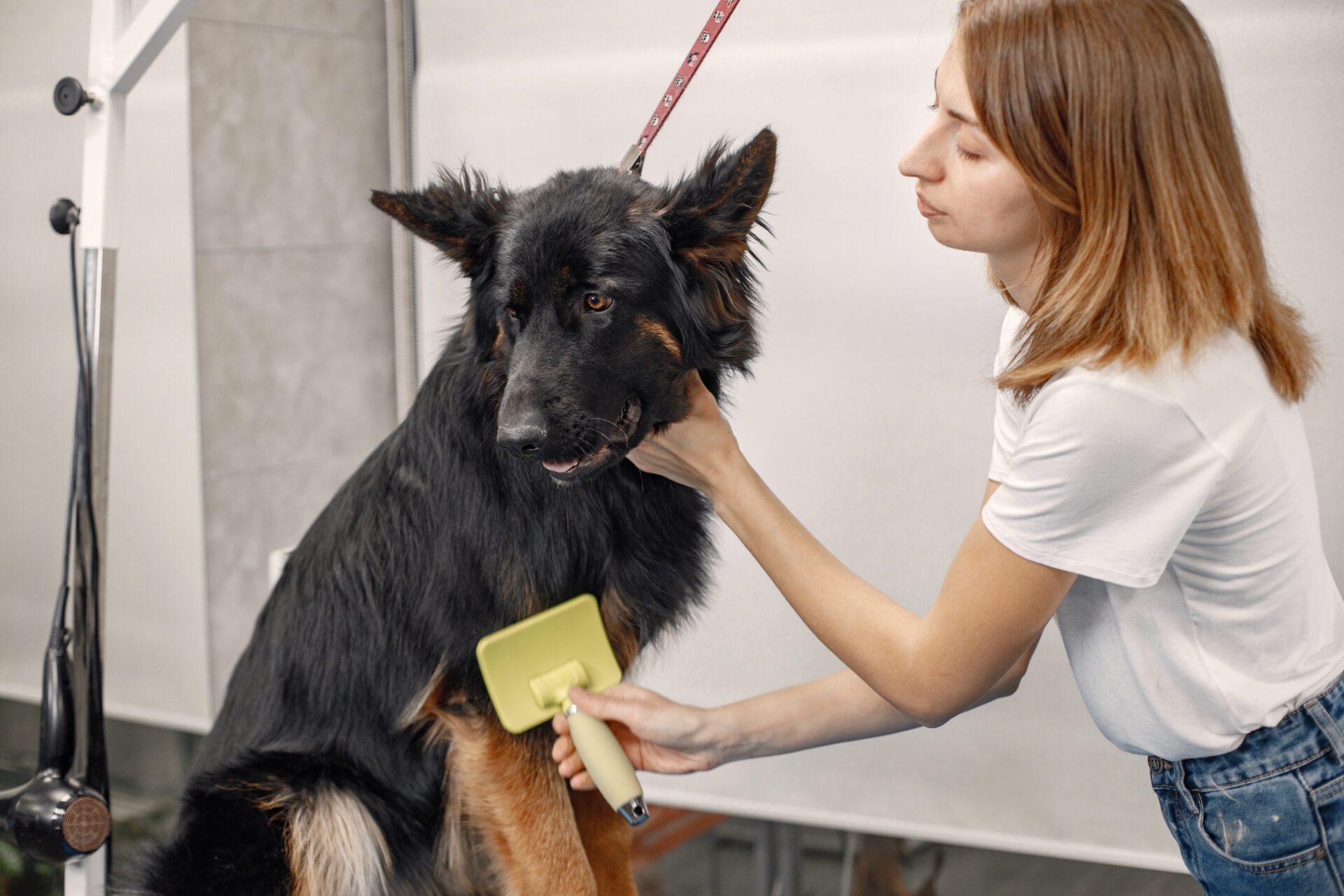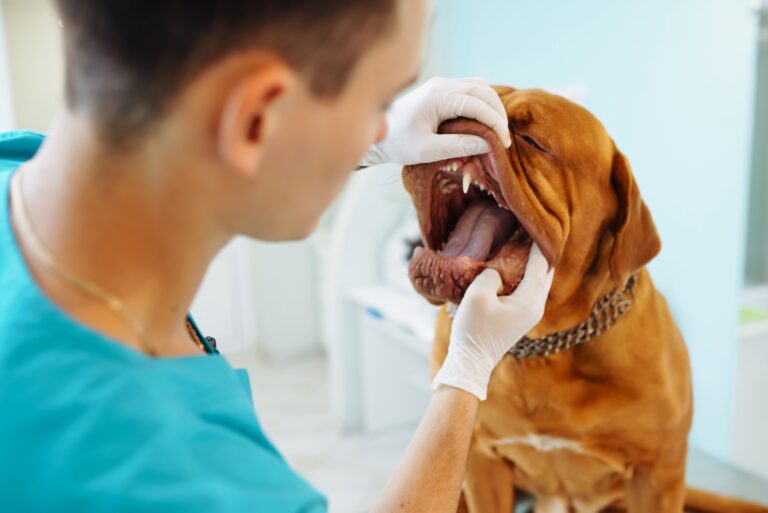Brushing your dog’s coat isn’t just about keeping them looking clean and tidy; it’s an essential part of their overall health and well-being. Regular brushing helps remove loose fur, prevents matting, stimulates the skin, and distributes natural oils to keep their coat shiny and healthy. But how do you ensure you’re doing it the right way? Whether you have a short-haired pup or a long-haired beauty, brushing your dog properly requires the right tools, techniques, and a bit of patience.
Here’s a comprehensive guide to brushing your dog the right way, ensuring the process is as enjoyable for them as it is effective for you.
Some of the links on this page are affiliate links, which means we may earn a commission at no extra cost to you if you make a purchase. As an Amazon Associate I earn from qualifying purchases. We only recommend products we genuinely love and think you’ll find helpful!
Why Brushing is Essential for Your Dog
Brushing isn’t just about aesthetics; it serves several important purposes:
Prevents Mats and Tangles
Matted fur can be painful for dogs and may lead to skin irritation or infections. Regular brushing helps prevent knots from forming, especially in long-haired breeds.
Reduces Shedding
Brushing removes loose fur before it has a chance to shed all over your home, making it a win-win for you and your dog.
Stimulates Skin Health
Brushing promotes better blood circulation and stimulates the skin, encouraging the production of natural oils that keep your dog’s coat shiny and soft.
Allows for Health Checks
While brushing, you can check for any unusual bumps, cuts, or signs of parasites like fleas or ticks. Catching these early can prevent bigger health issues down the line.
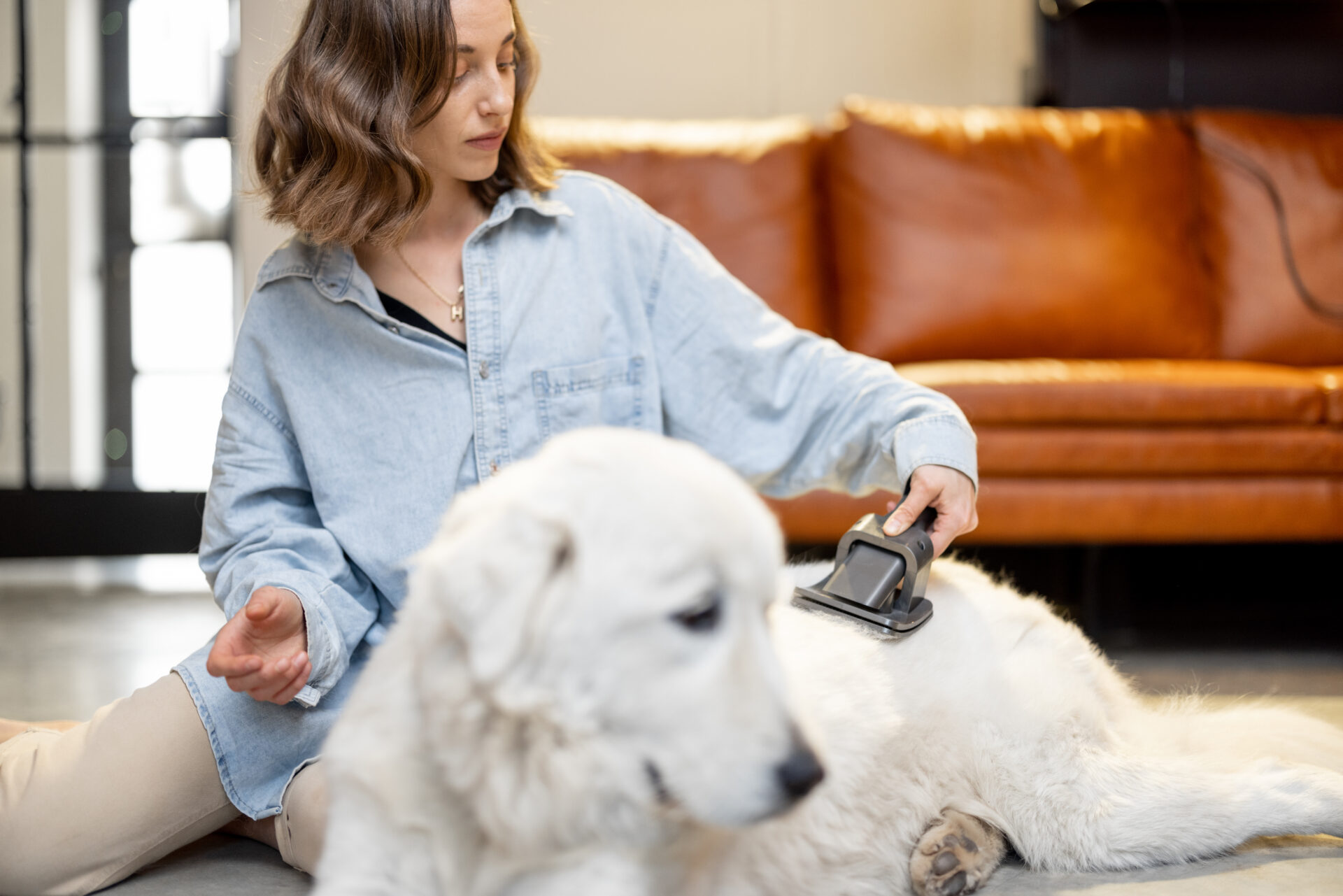
Step 1: Choose the Right Brush for Your Dog’s Coat
Not all brushes are created equal, and using the right one for your dog’s coat type is crucial. Here’s a quick breakdown:
- Short-haired dogs (e.g., Boxers, Beagles): Use a bristle brush or rubber grooming mitt. These tools remove loose fur and dirt effectively without irritating the skin.
- Medium-haired dogs (e.g., Golden Retrievers, Border Collies): A slicker brush is ideal for removing tangles and loose fur, while an undercoat rake can help during shedding season.
- Long-haired dogs (e.g., Afghan Hounds, Shih Tzus): A pin brush is great for detangling, while a slicker brush can help with finer grooming.
- Double-coated dogs (e.g., Huskies, German Shepherds): An undercoat rake is essential for reaching the dense undercoat, especially during heavy shedding periods.
- Curly-coated dogs (e.g., Poodles, Bichon Frises): A slicker brush works well to prevent mats, and a metal comb can help with detailing.
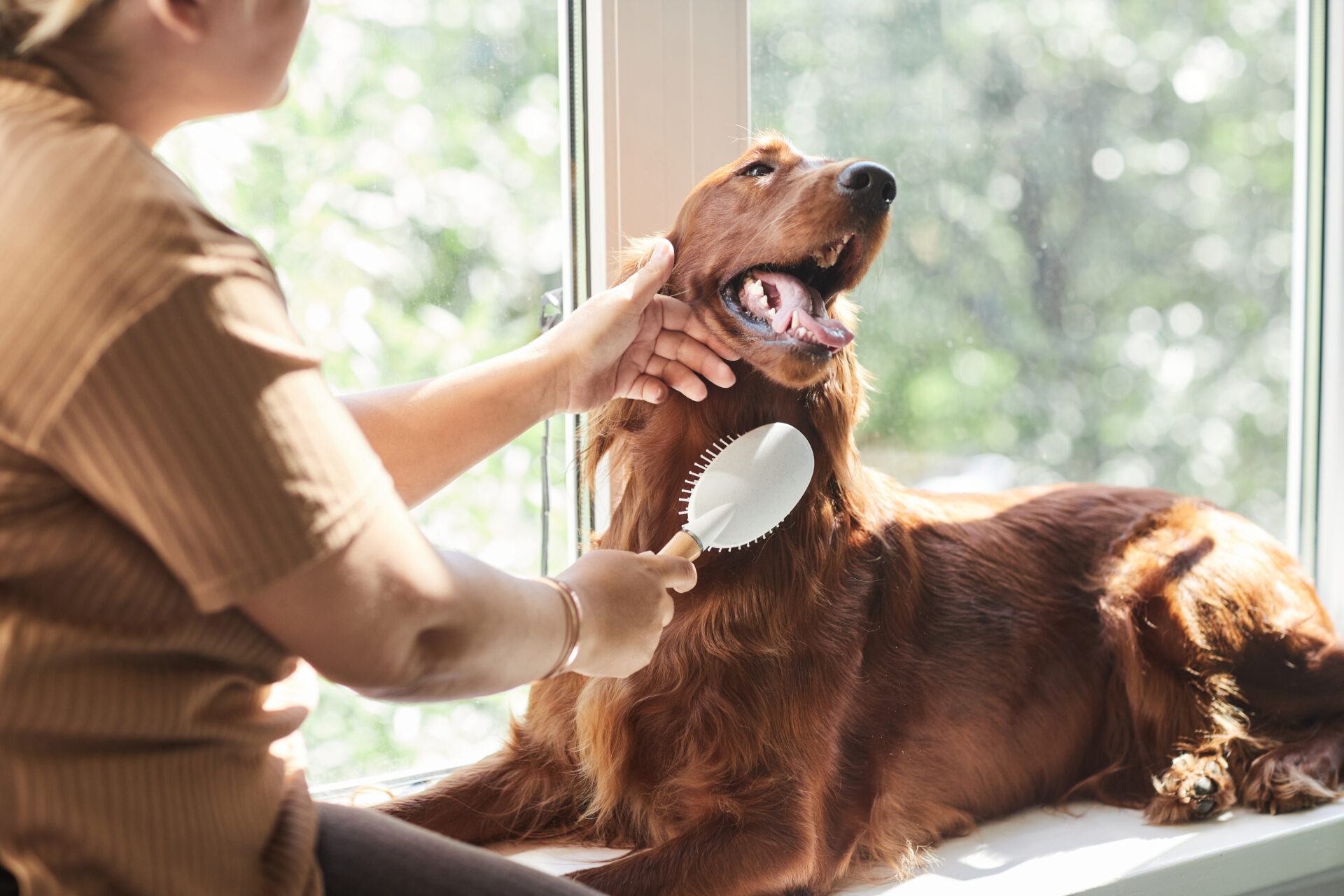
Step 2: Set the Right Environment
Brushing your dog should be a relaxing experience for both of you. Choose a quiet, comfortable space where your dog feels safe. If they’re new to brushing, start with short sessions and use positive reinforcement, like treats or praise, to make the experience enjoyable.
Place your dog on a stable surface if they’re small, or sit on the floor with them if they’re larger. Keeping them calm and still is key to effective brushing.
Step 3: Start with a Quick Check
Before brushing, take a moment to check your dog’s coat and skin. Look for any mats, dirt, or debris that might need special attention. If you notice any mats, avoid yanking on them; instead, gently loosen them with your fingers or a detangling spray before brushing.
Also, check for signs of skin issues, like redness, sores, or fleas. If you spot anything unusual, consult your veterinarian before proceeding with brushing.
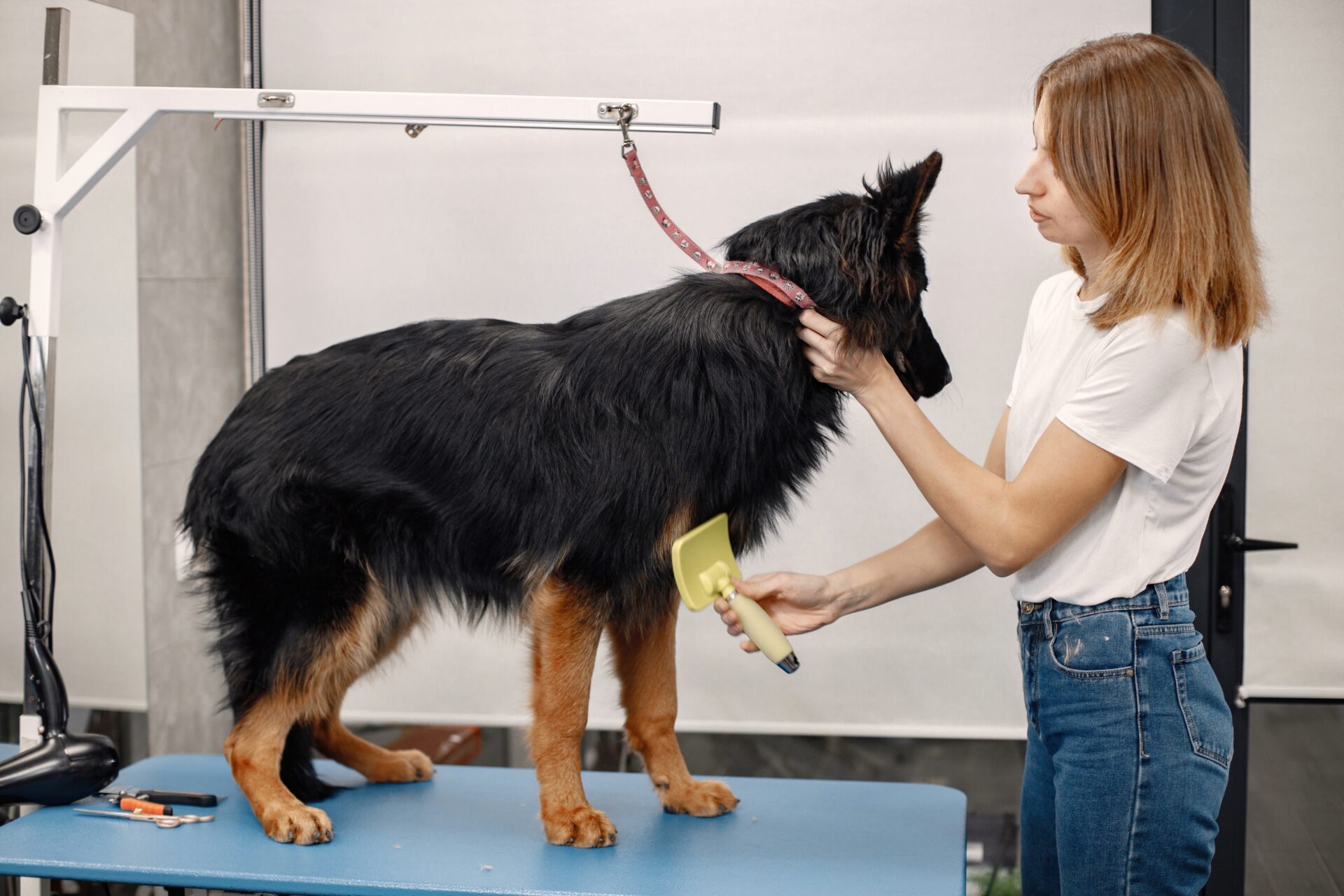
Step 4: Begin Brushing – Follow the Grain
When you’re ready to start, brush in the direction of your dog’s fur growth. Brushing against the grain can be uncomfortable for your dog and may cause irritation.
- Short-haired dogs: Use gentle, sweeping strokes with a bristle brush or grooming mitt. Pay special attention to areas where dirt tends to collect, like the chest, belly, and legs.
- Medium and long-haired dogs: Start at the top of the head and work your way down the body, section by section. If you encounter tangles, use a detangling spray or your fingers to carefully work through them before brushing.
- Double-coated dogs: Begin with an undercoat rake to remove loose fur from the dense undercoat, then finish with a slicker brush for the outer layer.
Be patient and gentle, especially if your dog’s coat is prone to tangles. Pulling too hard can cause discomfort or make your dog reluctant to be brushed in the future.

Step 5: Pay Attention to Problem Areas
Certain parts of a dog’s body require extra attention:
- Behind the ears: This area is prone to tangles, especially in long-haired breeds. Use a slicker brush or comb gently.
- Under the legs: Mats can easily form in the armpit area, so brush carefully to avoid pulling.
- Tail: For long-haired breeds, the tail can be a tricky spot. Brush it gently, section by section.
- Belly: Some dogs are sensitive about having their bellies brushed. If yours is, go slow and use lots of positive reinforcement.
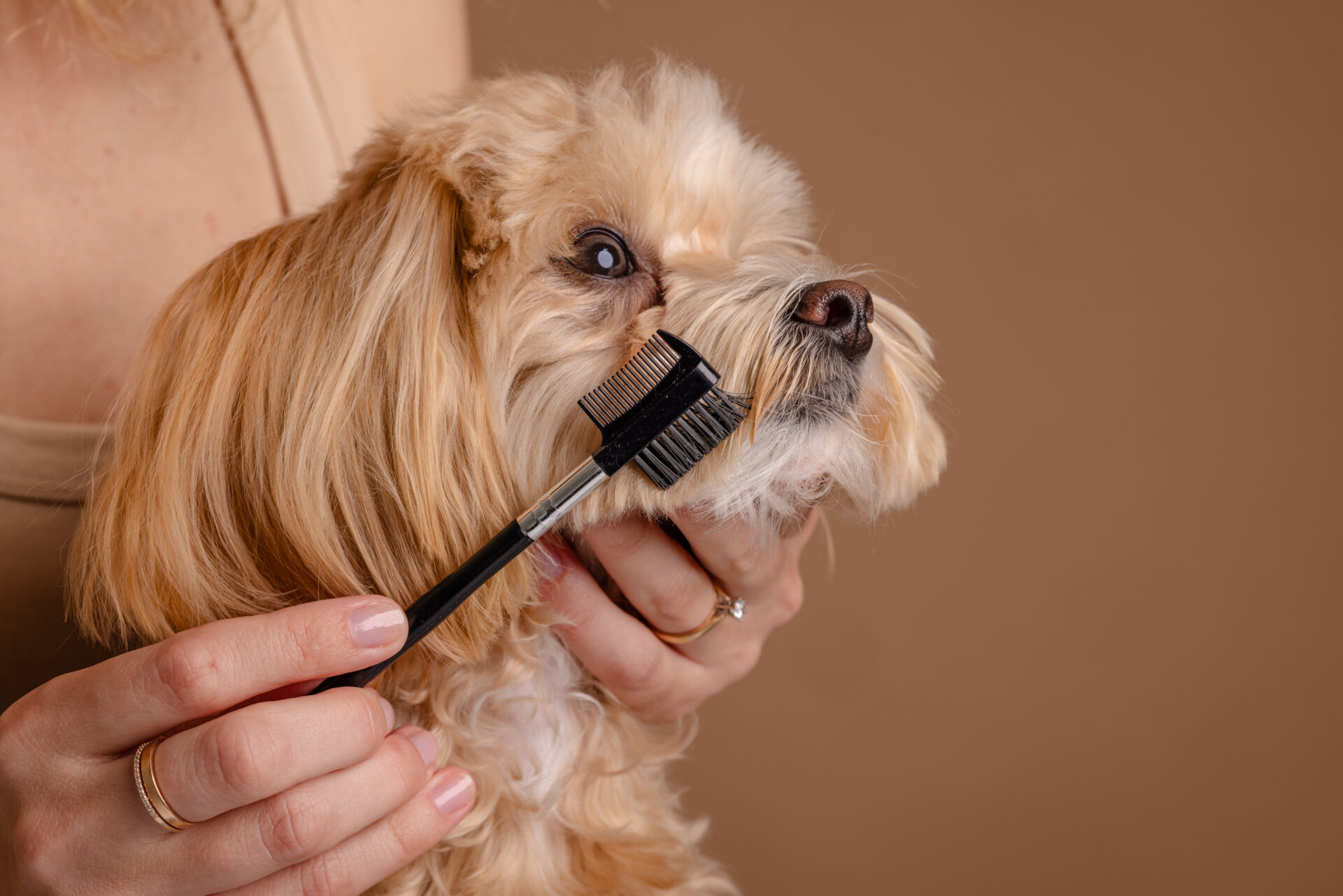
Step 6: Use a Comb for Finishing Touches
After brushing, use a metal comb to go over your dog’s coat. This helps catch any remaining tangles or loose fur. A comb is particularly useful for detailing areas like the ears, face, and tail.
If your dog has a curly or wavy coat, a comb can help separate the fur and give them a polished look.
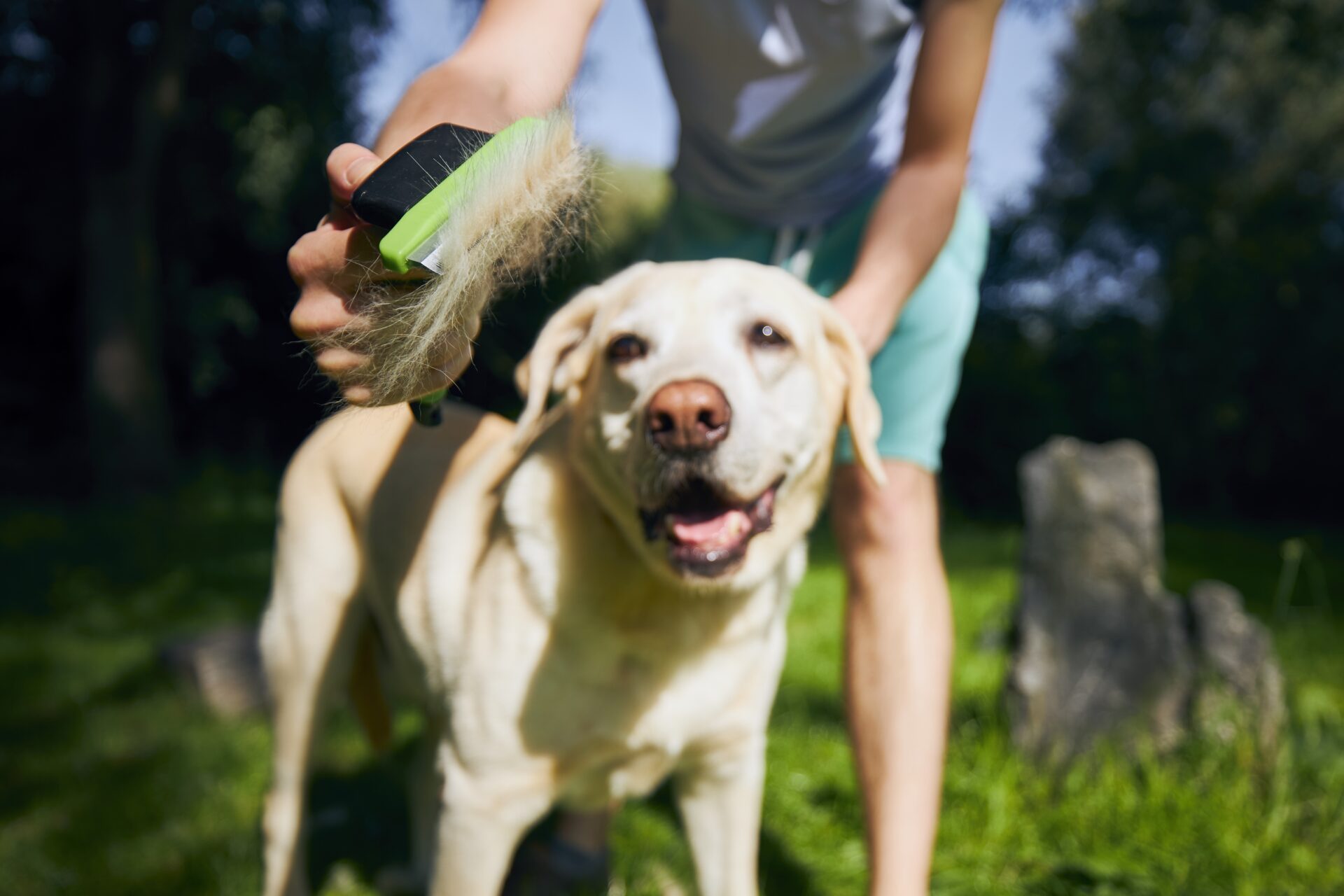
Step 7: Address Shedding and Seasonal Changes
Shedding is a natural part of a dog’s life, but it can be more intense during seasonal changes. Double-coated breeds, in particular, “blow” their coats twice a year. During these times, brushing daily with an undercoat rake or deshedding tool can help manage the fur and keep your dog comfortable.
For dogs that shed less, like Poodles, regular brushing still helps prevent mats and keeps their coat healthy.
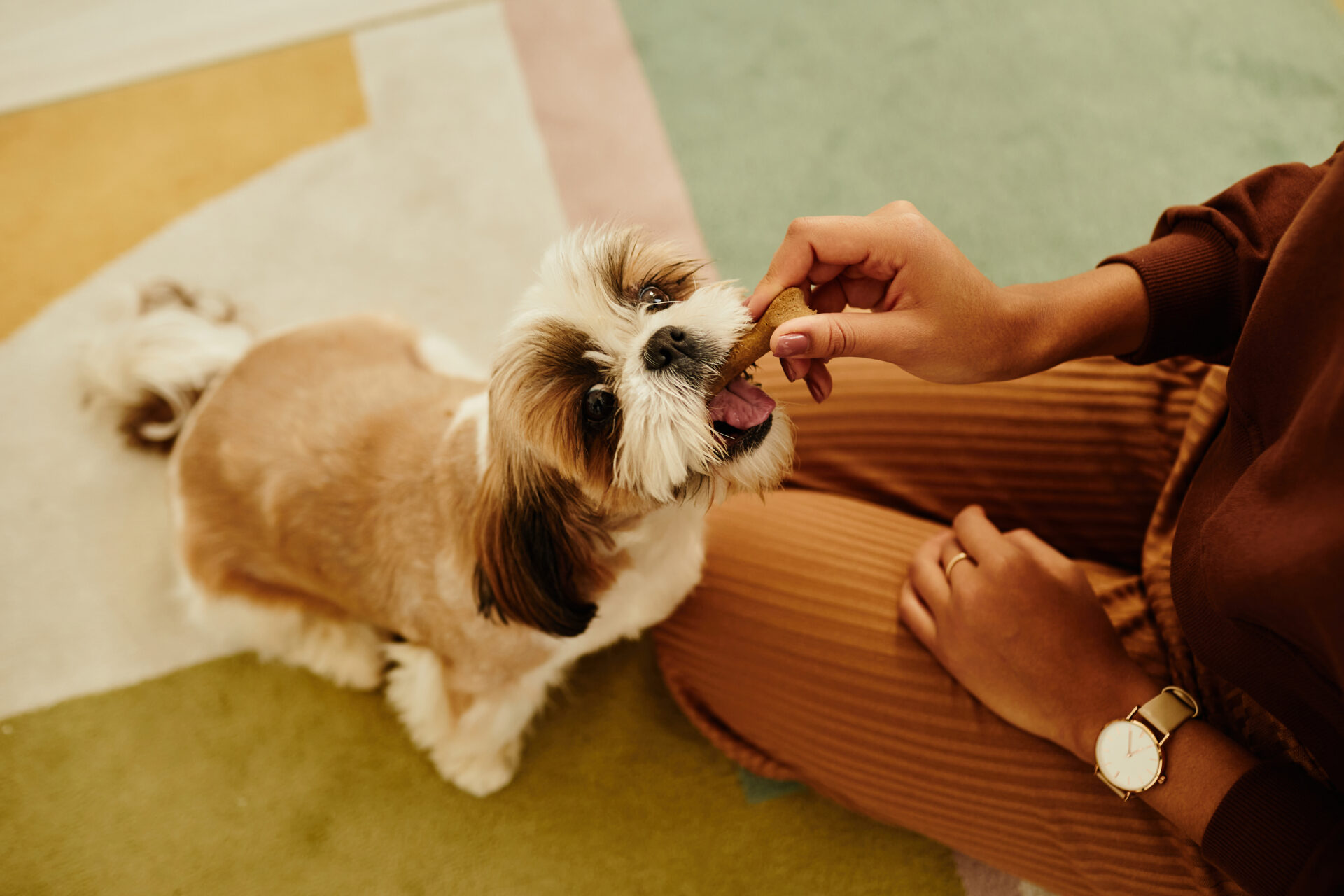
Step 8: End on a Positive Note
Once you’ve finished brushing, reward your dog with a treat, some playtime, or extra cuddles. Ending the session positively reinforces good behavior and makes future brushing sessions more enjoyable.
If your dog shows signs of stress during brushing, take breaks and try again later. Building trust and creating a positive association with grooming takes time and patience.
How Often Should You Brush Your Dog?
The frequency of brushing depends on your dog’s coat type:
• Short-haired breeds: Once a week is usually sufficient.
• Medium-haired breeds: Brush every few days to prevent tangles.
• Long-haired breeds: Daily brushing is recommended to avoid mats and tangles.
• Double-coated breeds: Weekly brushing is fine for maintenance, but increase frequency during shedding seasons.
• Curly-coated breeds: Brush every couple of days to keep the coat free of mats.
Common Mistakes to Avoid
1. Using the Wrong Brush
Using a brush that isn’t suited to your dog’s coat type can make brushing ineffective and uncomfortable for your dog.
2. Brushing Too Hard
Be gentle, especially on sensitive areas. Brushing too hard can irritate the skin and make your dog reluctant to be groomed.
3. Neglecting Mats
Mats should be addressed carefully and promptly. Ignoring them can lead to skin irritation or infections.
4. Skipping Grooming Sessions
Infrequent brushing leads to tangles, mats, and an unhealthy coat. Establish a routine that works for your dog’s coat type.
Conclusion
Brushing your dog is a simple yet powerful way to keep them healthy and happy. By choosing the right tools, creating a calm environment, and using gentle, effective techniques, you’ll make grooming a positive experience for both you and your furry friend. Regular brushing not only keeps your dog’s coat looking great but also strengthens the bond you share. So grab that brush, and get ready to pamper your pup—they’ll thank you with wagging tails and happy kisses!

